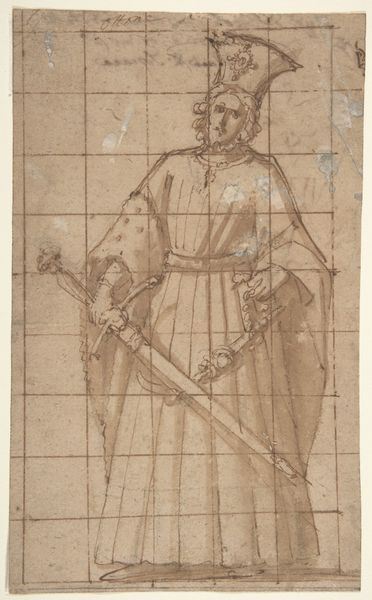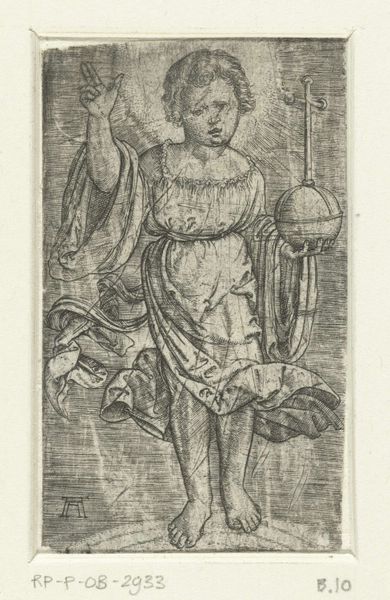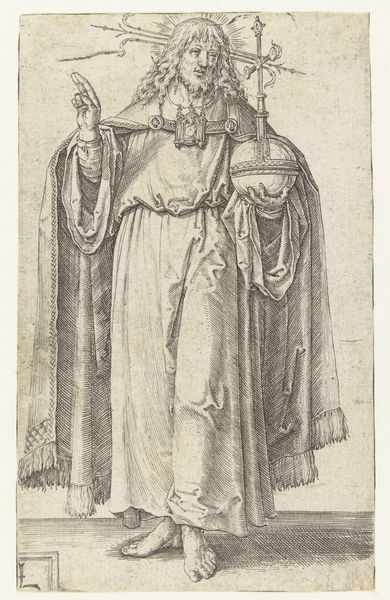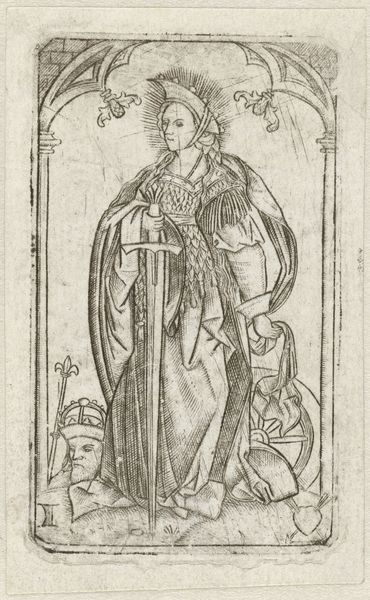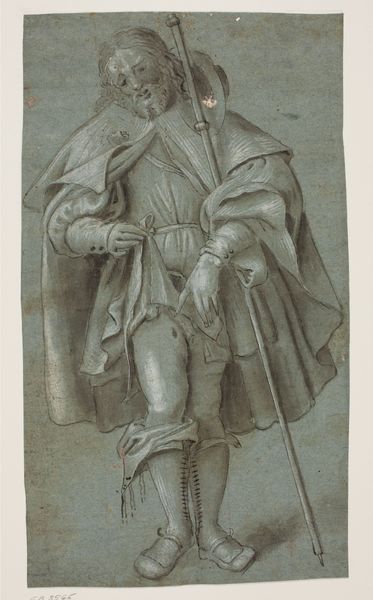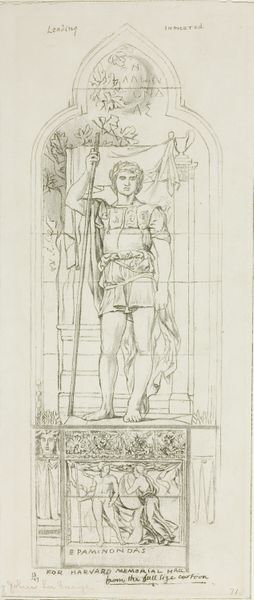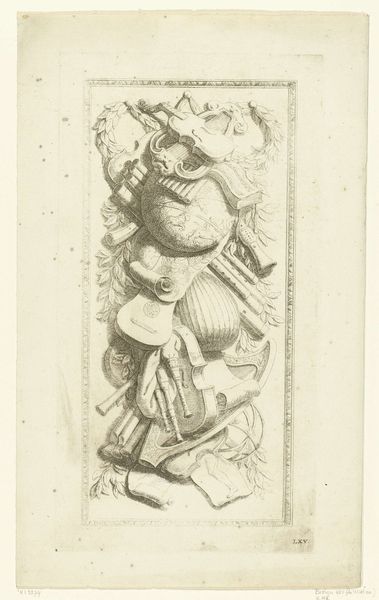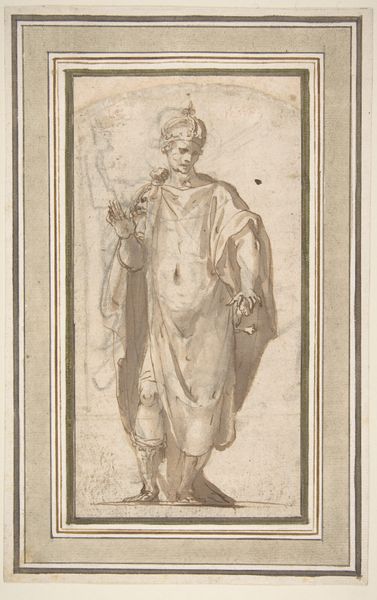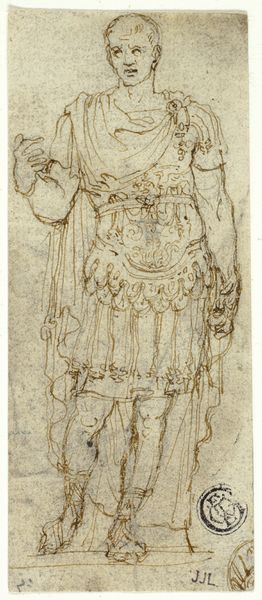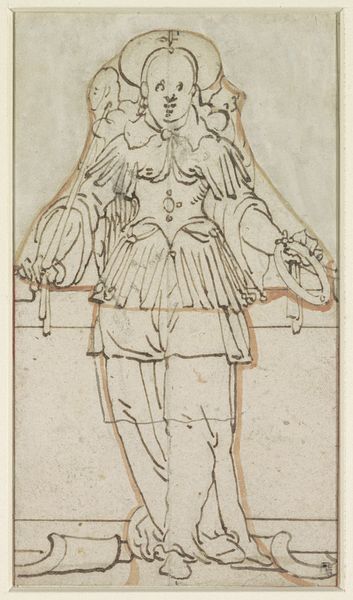
drawing, print, paper, ink
#
drawing
# print
#
figuration
#
paper
#
ink
#
romanticism
#
mythology
#
history-painting
Dimensions: sheet: 5 3/16 x 2 13/16 in. (13.1 x 7.1 cm)
Copyright: Public Domain
Curator: This is Julius Hübner's "The Young Siegfried," created in 1839. It's a striking drawing made with ink on paper, housed here at The Met. What's your initial take on it? Editor: It possesses a captivating stillness. The composition is very balanced, and it strikes me as surprisingly small in scale, almost like an intimate portrait, even though it depicts a mythical figure ready for battle. The detailed linework hints at a labor-intensive production. Curator: The stillness you observe might relate to the sociopolitical atmosphere of the time. This work emerged in an era rife with nationalist sentiments, when the need to define the essence of German identity through its history, religion, and mythology was considered extremely crucial. This depiction offers Siegfried, poised and resolute. Editor: And I think it is essential to view this labor as deeply influenced by its place in Romanticism. The decorative border almost looks machine-made, although this print was made by hand; I’m struck by the deliberate juxtaposition of craft versus mass-produced media in the depiction itself. Were drawings and prints like these widely accessible to working-class people at that time? Curator: Certainly, but in varied ways. Consider, for example, the rising bourgeois interest in these historically informed Romantic visions, set against what it might have represented for a burgeoning, if disenfranchised, working class struggling to identify themselves in Germany's narrative, often excluding many in favor of national heroes such as the young Siegfried. His stance echoes that of classical heroes of old, yet rooted in Germanic folklore. Editor: The production choices amplify these tensions; this piece becomes both art object and reproducible artifact for popular consumption. Also, that thinness of the lines produced in ink feels precious; these are interesting choices! Curator: It reveals how even the seemingly simple application of ink on paper can hold layers of socio-cultural meaning, and invites us to look at heroism and nationhood from multiple angles. Editor: Definitely! Reflecting on it all, I’m reminded that sometimes it's by scrutinizing these deliberate material and making decisions that we understand the deeper, and sometimes conflicted, cultural significance embedded within a single image.
Comments
No comments
Be the first to comment and join the conversation on the ultimate creative platform.

